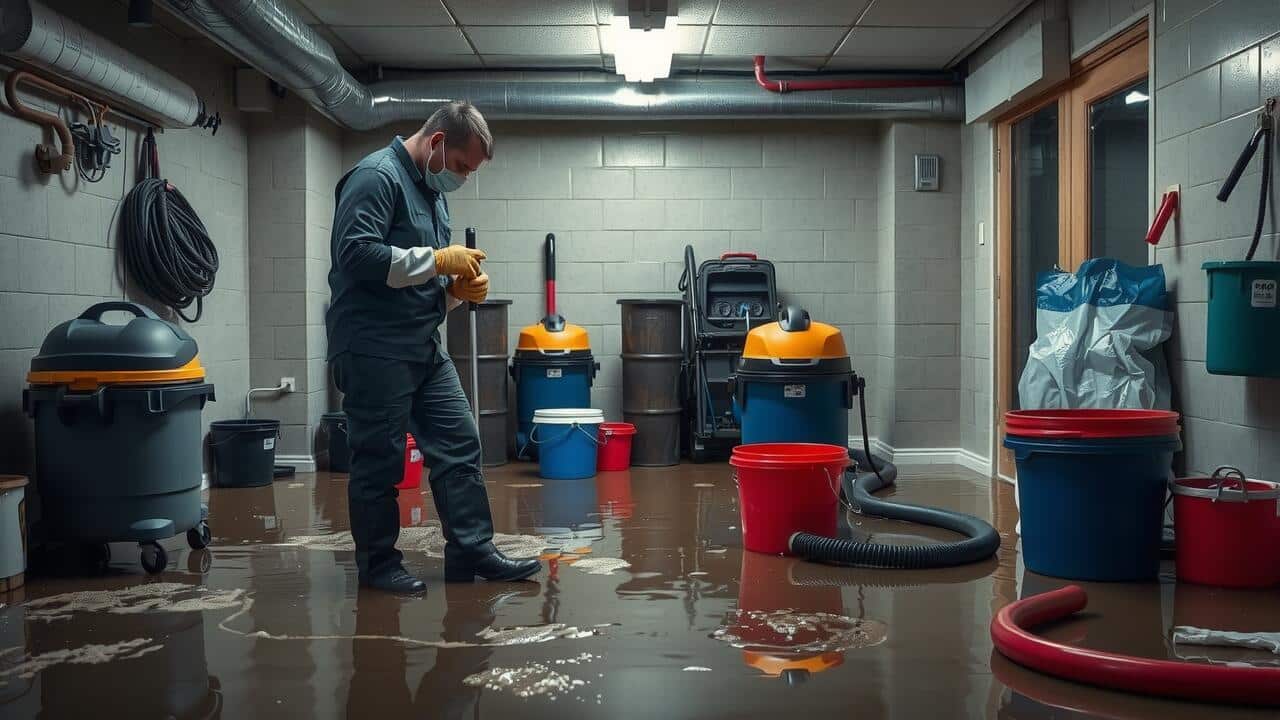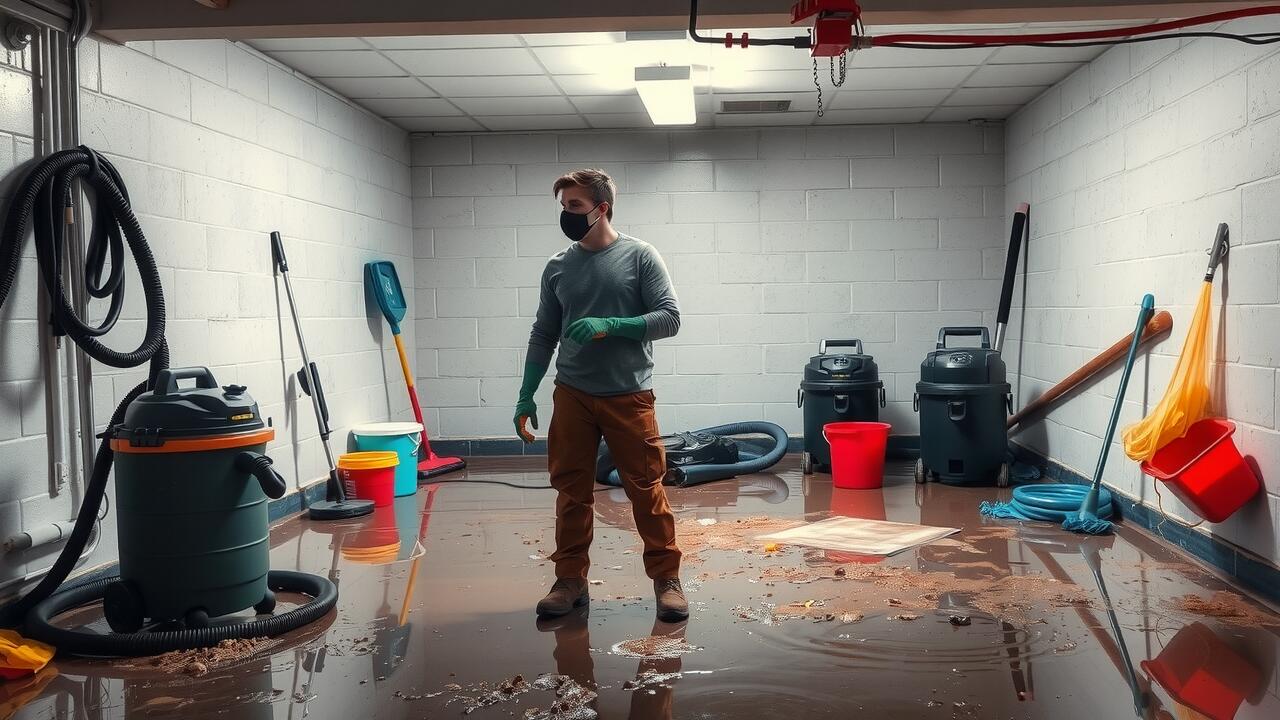
Table Of Contents
Managing Mold Growth
Mold growth is a significant concern following basement flooding. The damp environment creates an ideal setting for mold spores to thrive, leading to potential health risks and property damage. It is essential to begin the cleanup process as soon as possible to reduce mold proliferation. Proper ventilation and humidity control play a critical role in preventing mold from establishing a foothold. Using dehumidifiers and fans can help dry out the affected area more quickly, minimizing moisture buildup.
When addressing mold issues, thorough cleaning and treatment are necessary. Mold can be managed with specialized cleaning solutions designed to eliminate spores and prevent future growth. In cases of extensive contamination, it may be prudent to consider professional assistance. The risks associated with mold exposure can be severe, making basement flooding cleanup in such situations a priority. Vigilance and prompt action are key in protecting both health and property.
Prevention Strategies and Treatments
To effectively manage mold growth after a basement flood, prevention plays a crucial role. Ensuring proper ventilation is vital in reducing humidity levels. Dehumidifiers can help maintain a desirable moisture level by removing excess water from the air. Additionally, applying mold-resistant paint and sealants can provide an extra layer of protection. Regularly checking the foundation for cracks and sealing any gaps can also help prevent future water intrusion, a key step in proactive basement maintenance.
In the aftermath of basement flooding, swift treatments are essential to mitigate mold risks. Once water is removed, all affected surfaces should be thoroughly cleaned with a mixture of water and detergent. For more stubborn mold, a solution of vinegar or bleach may be necessary, though caution should be exercised to avoid harmful fumes. Addressing any lingering moisture quickly can significantly decrease the likelihood of mold growth. Following these steps in the context of basement flooding cleanup in your home can ensure a safer environment and minimize health risks associated with mold.
Inspecting Structural Integrity
Inspecting the structural integrity of your basement following a flood is crucial for ensuring safety and longevity. Water intrusion can weaken foundations, compromise walls, and damage flooring. Look for cracks in the walls or foundations, bulging areas, and signs of warping in wooden structures. These signs of distress require immediate attention to stabilize the environment and prevent further deterioration. Regular inspections after water damage help identify potential issues early and allow for timely repairs.
Basement Flooding Cleanup in your home should include a thorough evaluation of these structural components. It’s also important to check for any signs of mold growth, which can develop rapidly in damp areas. Forgotten corners and hidden spaces are often breeding grounds for mold, contributing to larger structural problems over time. Maintaining a clean and dry basement after flooding not only protects the building’s framework but also enhances the overall air quality in your home.
Signs of Damage to Look For
Identifying signs of damage after basement flooding is essential for ensuring safety and preventing further complications. Look for water stains on walls and ceilings, which indicate higher moisture levels. Peeling paint or wallpaper can also signal water intrusion. Foundation cracks or bowing walls are serious signs that structural integrity may be compromised. Additionally, an unusual musty odor can suggest mold growth, which necessitates immediate attention.
During the inspection process, check for warped flooring or buckled tiles, as these can further illustrate the extent of water damage. Inspect any electrical systems or appliances that may have come into contact with water. If these indicators are present, it may be time to consider professional assistance for Basement Flooding Cleanup in your area. Addressing these issues promptly can prevent additional damage and health risks associated with mold and structural failure.
Contacting Professionals
When dealing with extensive damage caused by flooding, contacting professionals is often necessary. Their expertise in basement flooding cleanup in various scenarios can make a significant difference. Trained specialists handle water extraction, drying, and mold remediation much more effectively than DIY methods. They have the right equipment and can assess problems that might not be immediately visible, such as structural damages or hidden moisture pockets.
It’s crucial to seek help if the flooding is severe or if contaminants, like sewage, are present. Professionals can provide safety measures while ensuring that the cleanup is done efficiently. They will also guide you on preventing future incidents and offer advice on improving your basement’s resilience against potential floods. Making the decision to bring in the experts can save time and resources in the long run.
When to Call in the Experts
Dealing with extensive water damage can be overwhelming. If the flooding in your basement is beyond what you can manage—whether due to significant water levels, damage to the structure, or the presence of hazardous materials like sewage—it’s essential to reach out for professional help. Experts in basement flooding cleanup in your area have the experience and tools necessary to handle such situations safely and effectively.
Hiring professionals can ensure that all aspects of the cleanup are addressed thoroughly. They possess specialized equipment to extract water, dry out affected areas, and assess any potential risks for mold growth or structural issues. If you notice signs of prolonged dampness or damage, waiting too long could lead to further complications. Prompt action from professionals can help mitigate long-term damage and maintain the safety of your home.
FAQS
What immediate steps should I take if my basement floods?
First, ensure your safety by turning off electricity and gas if necessary. Remove as much water as possible using pumps or wet vacuums, and start drying out the area with fans and dehumidifiers.
How can I prevent mold growth after a basement flood?
To prevent mold growth, ensure proper ventilation, use dehumidifiers to reduce moisture, and clean surfaces with mold-inhibiting solutions. Additionally, remove and discard any water-damaged materials like carpets and drywall.
What are the signs of structural damage in a flooded basement?
Signs of structural damage may include cracks in the walls or foundation, warping or buckling of floors, and doors or windows that no longer open or close properly. If you notice any of these, it’s important to have a professional inspect the area.
When should I consider hiring a professional to help with my flooded basement?
You should consider hiring a professional if the flooding is extensive, if you notice significant structural damage, or if you are unsure about how to properly clean and restore the area to prevent mold and other hazards.
How can I effectively clean and disinfect my flooded basement?
After removing water, clean all surfaces with a mixture of water and detergent, followed by a disinfectant suitable for the materials in your basement. Be sure to wear protective gear such as gloves and masks during the cleaning process.
